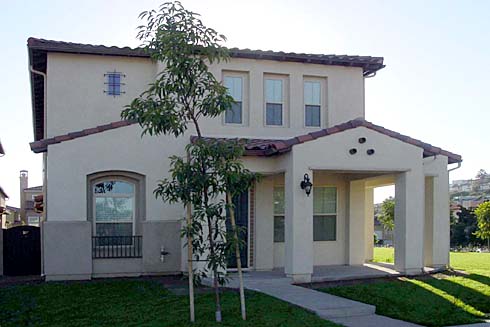RIGHT-OF-WAY
Understanding Right-of-Way in Real Estate
In the realm of real estate, the term 'right-of-way' encompasses two distinct yet interconnected concepts. It refers to both the right to use a specific path for access or passage, often in the form of an easement, and the areas within subdivisions dedicated to the government for public access, including streets and roads.
1. Right-of-Way as Easement
Definition
The right-of-way, as an easement, grants an individual or entity the legal right to use a particular pathway or portion of another person's land for specified purposes, such as access or utility installation. This type of right-of-way can be crucial for ensuring access to otherwise landlocked properties or for allowing utility companies to maintain infrastructure on private land.
Types of Easements
Private Easements:
These are typically established between private parties to grant access to a property or to allow the installation and maintenance of utilities.
Public Easements:
Public entities, such as municipalities, may also hold easements for public infrastructure or access to public resources.
Implications for Property Owners
Property owners granting a right-of-way easement retain ownership of the land but must accommodate the rights granted to the holder of the easement.
Property owners granting a right-of-way easement retain ownership of the land but must accommodate the rights granted to the holder of the easement.
Those benefiting from a right-of-way easement should understand the scope of their rights and any associated obligations, such as maintenance responsibilities or limitations on use.
2. Right-of-Way in Subdivisions
Dedication of Public Access Areas
In the context of subdivisions, right-of-way refers to the portions of land dedicated by property developers to local governments for public use. These dedicated areas are typically used for the construction and maintenance of streets, roads, sidewalks, and other public infrastructure necessary for accessing and navigating the subdivision.
Community Impact
The dedication of right-of-way areas within subdivisions contributes to the development of essential public infrastructure, fostering connectivity and accessibility within the community.
Local governments are responsible for the maintenance and regulation of these public access areas, ensuring their functionality and safety for residents.
Legal Considerations and Impact
Legal Documentation:
Establishing and managing right-of-way easements requires clear and legally binding documentation to define the scope of rights and obligations for all involved parties.
Land Use and Development:
Developers and property owners must adhere to zoning and land use regulations that govern the creation and maintenance of right-of-way areas within subdivisions.
Conclusion
The concept of right-of-way in real estate encompasses both the granting of easements for access and utility purposes and the dedication of land within subdivisions for public access and infrastructure. Understanding the legal implications, rights, and responsibilities associated with right-of-way is crucial for property owners, developers, and local governments to ensure the effective management and utilization of these vital pathways and public access areas.
MORE REAL ESTATE TERMS
A, B, C, D, E, F, G, H, I, J, K, L, M, N, O, P, Q, R, S, T, U, V, W, X, Y, Z
Featured New Home

Featured Mortgage Brokers
- VENTA FINANCIAL GROUP INC, LAS VEGAS, NV
1300 S JONES BLVD STE 150
LAS VEGAS, NV 89146 - PINNACLE CAPITAL MORTGAGE CORPORATION, PUYALLUP, WA
311 RIVER RD STE 202
PUYALLUP, WA 98371 - MCCUE MORTGAGE COMPANY, NEW BRITAIN, CT
1 LIBERTY SQ
NEW BRITAIN, CT 6051 - PRYSMA LENDING GROUP LLC, DANBURY, CT
10 PRECISION RD STE 2B
DANBURY, CT 6810 - REVERSE MORTGAGE SOLUTIONS INC, NEWBURGH, NY
700 CORPORATE BLVD
NEWBURGH, NY 12550